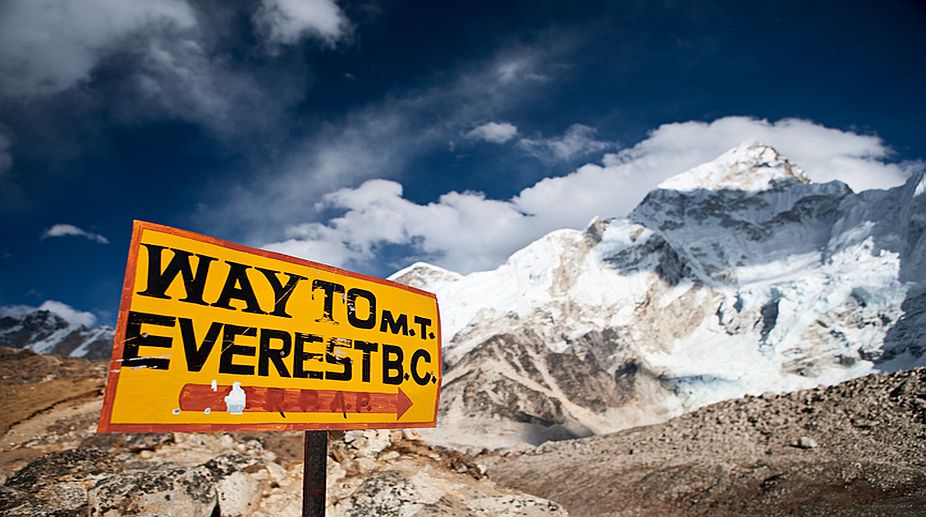The “season” is yet to officially commence but already teams of mountaineers are out in the Mt. Everest region, training and acclimatising for a bid on what continues to be the “ultimate” in the demanding sport. It is estimated that at least 400 climbers are being permitted this season; and since that would mean at least twice as many sherpas ~ and even more porters at the lower levels ~ there will be no change in the worrisome “overcrowding” of the world’s most celebrated mountain. Hundreds have followed the 1953 footsteps of Tenzing Norgay and Edmund Hillary, but attaining the summit has lost none of its magical allure. Sadly, in recent years the death toll has also been rising, and while freak weather conditions were deemed responsible for major mishaps in 2014 and 2015, there is a growing awareness that some of the disasters are the outcome of overcrowding, and indeed “traffic jams” on the final stages of the climb/descent. That adds up to a real dilemma, the economy of Nepal is heavily dependent on mountaineering and thousands were left jobless when the “season” was truncated. There is also reason to believe that with so many teams trying for success a number of less-expensive but inexperienced guides are now being engaged by less-proficient climbers. Not only are “corners being cut” on the sanitation and environment-protection front (decades ago the famous British climber Chris Bonnington had spoken of a garbage-trail marking the route up the mountain), but climbers are also being exposed to avoidable hazards. Raising the permit fees might serve as a “population control” measure, but fewer numbers translates into economic disruption down the line. It is evident that Everest is fast-becoming a victim of its own romantic fascination: there are other “tall” peaks, equally challenging from a technical perspective, but they have not acquired the charm of Everest. Maybe a major publicity effort will create “counter-magnets”, so too a proposal to permit private agencies to “manage” some of them. Everest will always remain the pinnacle of the sport.
There is no dearth of attractive options in the “Indian Himalayas” and though the sport has turned increasingly well-patronised, somehow the full potential of foreign climbers has not been tapped. Could it be because of a five-star fixation of the travel trade, which is in sharp contrast to the humdrum treks that have proved so popular in Nepal? Or because large stretches of the northern frontier are popularly perceived as zones of “military-interest”, and a number of restrictions on human movement ~ foreigners specially ~ are in force? The sport in India continues to be dominated by the “uniforms”: a special effort is needed to ignite the larger spirit of adventure, and boost the economic prospects of our hill- folk.











